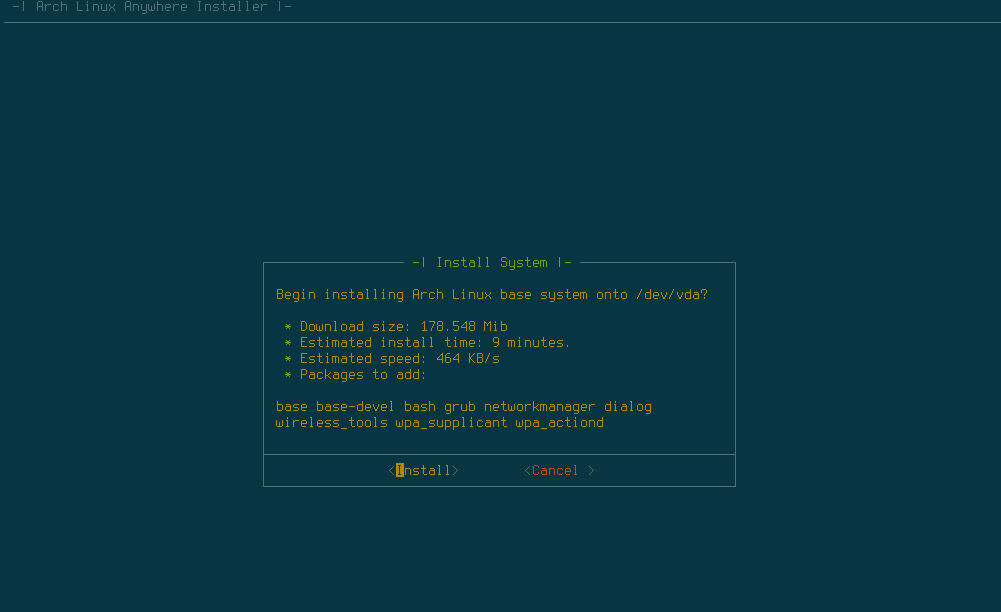Install Deb Package On Arch Linux Kde
Install KDE Plasma 5.9 in Ubuntu 16.10/Linux Mint 18, Fedora 23/25 and OpenSUSE. Install KDE Plasma on Debian. For Arch Linux, packages are available to. The final package can be installed like any local Arch Linux package. Debtap is now available on AUR! Q: What 'debtap' stands for? A: DEB To Arch (Linux) Package. Q: Isn't better to download an official package or write a PKGBUILD in case I need to compile a package or convert a.deb package to.No ifconfig Package? / Applications & Desktop.17 postsJun 9, 2011[SOLVED]How to install.deb application (debian binary.12 postsDec 13, 2010More results from bbs.archlinux.orgMissing.
: English - - - - The package management system binds all the software on a Debian system together. Debian uses named 'packages' for each piece of software, bundles of files which provide the files to be installed on the system, the dependencies between packages and the configuration of the software. These packages can be installed or removed (unless, of course some other package requires it) at will. In fact, the majority of the Debian installation process is installing the most basic packages that allow Debian to function. Debian package management consists of several layers.
Excel Vba Com Port Communication on this page. The lowest layers, most of which you won't want to touch, are made up of and associated programs. On top of those layers are the and tools as well as the newer tool. The page has brief descriptions of these and other tools which work with files. All of those tools are documented by a, so if you have questions, you should consult them (eg. If you're new, there are some commands that have proven most useful for everyday use.


They are grouped generally as: Full-Screen Frontends These are both console (ncurses) and GUI based. There are a number of alternatives, similar in some regards, different in others. For users of RPM-based Linux distros, analogs include RedCarpet and Up2Date.
Think Cell Licence Keygen Idm on this page. • may be invoked in full screen console mode (ncurses) or CLI mode, and is a friendly frontend to apt. • is an older frontend to apt. It is no longer recommended. • is another GUI-based frontend.
• is one more GUI front-end (KDE-based). The front-end is based on. Command-line Frontends Generally, the command line tools integrate a number of operations (package list management, package retrieval, package installation, package configuration) in a single command plus arguments. The primary command line tool is.
Fulfills a similar purpose and although it is no longer the recommended primary tool some still use it. WARNING Following the upgrade instructions found in the is the best way to ensure that your system upgrades from one major Debian release to another (e.g. From lenny to squeeze) without breakage! These instructions will tell you to do a dist-upgrade (instead of upgrade) in the case of apt-get or full-upgrade (instead of safe-upgrade in the case of aptitude) at least once. So you would have to type something like # aptitude full-upgrade or # apt-get dist-upgrade -dy # apt-get dist-upgrade -u at some point during the major release upgrade. A dist-upgrade may also be required to keep up-to-date with the latest version of sid. Discover a package: How can you discover which package to use without the GUI programs?
# apt-cache search sylpheed Or use a web interface: With the web search interface you can search the package contents for specific files: Add a package: How can you add a package to your system without the GUI programs? All you have to do is find out the name of this package and enter the command # aptitude install sylpheed-claws or # apt-get install sylpheed-claws to add the package sylpheed-claws. Remove a package: To get rid of the package foo which is no longer needed, enter the command # aptitude remove foo or # apt-get remove foo If the package is needed by other packages you will be prompted to remove this package and all packages which depend on it.
Forcing removal of a package: While making a distribution upgrade it could happen that you have to remove a package first. But sometimes this is not possible with apt-get remove since the package has unmet dependencies or is not installed completely.
You can remove the package foo by using the command # dpkg --force-all --remove foo Read the contents of a installed package: Sometimes you want to know which files are in the package foo. To get this information enter the command $ dpkg -L foo Get the description of a package: You don't know what the package foo is for? Just write $ aptitude show foo or $ dpkg -p foo Search the package of a file: Have you ever wondered to which package a given file belongs? To get this information (e.g. For /usr/bin/apt-get), start the command $ dpkg -S /usr/bin/apt-get and it will tell you that this file is part of the package apt. .